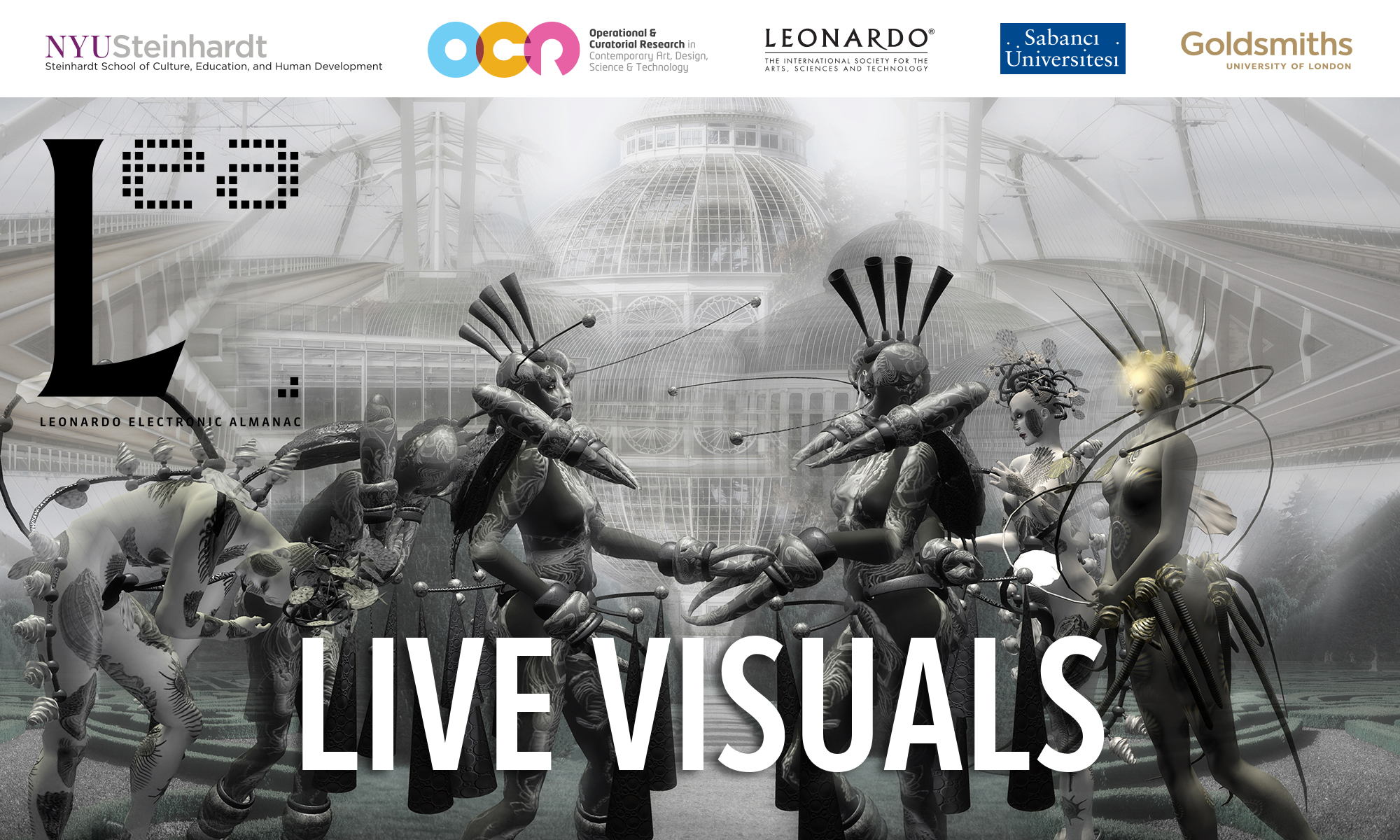
Live Visuals, Leonardo Electronic Almanac, Volume 19 Issue 3
ISBN: 978-1-906897-22-2
ISSN: 1071-4391
Volume Editors: Lanfranco Aceti, Steve Gibson and Stefan Müller Arisona
Editor: Ozden Sahin
Improvising Synesthesia: Comprovisation Of Generative Graphics And Music
by Joshua B. Mailman
Recent artistic practices and technologies are reshaping the definitions and categories of musical and visual artistic creativity. New categories arise, such as comprovisation. In my own creative practice, I pursue new connections between embodiment, spontaneity, and technology. Recent technologies provide opportunities to combine hierarchical process aspects of composition with the embodied spontaneity that characterizes improvisation.
For me this has led to the development of the Fluxations and FluxNoisations interactive systems, each of which enables the performer to spontaneously create – through a fully embodied immersive process – audiovisual trajectories that are expressive. [1] Such trajectories are intended to have aesthetic value emanating from prior aesthetic experience of musical and visual art works. In this case the development of such systems has arisen through careful and systematic analysis of prior works, analysis that is computational but inspired by phenomenology of listening. For instance, new ways of systematically analyzing the flux of texture in music have inspired generative technologies: new ways to synthesize texture as controlled through bodily dance movement. The analytical and creative processes constitute a cybernetic techné, which similarly fuels the computer graphics that are generated spontaneously through these systems.
[1]Fluxations is an algorithm I originally implemented in an interactive iPhone app. I developed the full body interactive version of Fluxations together with Sofia Paraskeva, who brought to the project her own prior knowledge of computer vision, Max/MSP programming, and wearable interface design.
Full article is available for download as a pdf here.
Volume 19 Issue 3 of Leonardo Electronic Almanac (LEA) is published online as a free PDF but will also be rolled out as Amazon Print on Demand and will be available on iTunes, iPad, Kindle and other e-publishing outlets.
